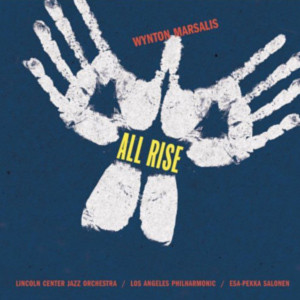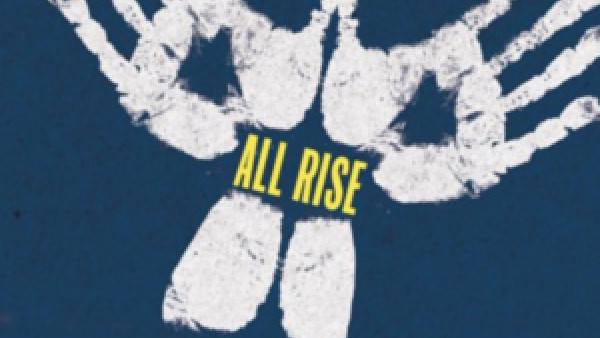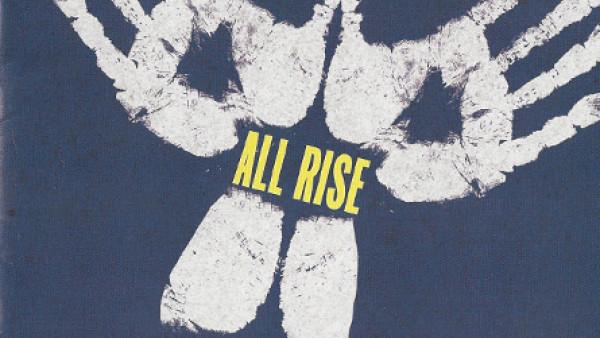Kurt Masur talks about Wynton and “All Rise”
“Here is Kurt Masur,” the eminent German conductor said when he telephoned to talk about Wynton Marsalis’s oratorio “All Rise.” This greeting prompted thoughts about how often Masur has been there to make sure that interesting things would happen.
Commissioning a major work from Marsalis for the New York Philharmonic and the Lincoln Center Jazz Orchestra — two of the major constituents of New York’s Lincoln Center — was Masur’s idea in the first place. And the groundwork for the idea was laid long before Masur had ever heard of Marsalis; indeed before Marsalis was born. More than a half-century ago, as a young musician studying in Leipzig, then sealed off in East Germany, Masur was fascinated by jazz.
“After World War II,” Masur said, “the radio became for us very important. I could follow the open rehearsals of the Boston Symphony Orchestra conducted by Charles Munch transmitted by the United States Air Force, and I heard the music of Duke Ellington all the time. I was very proud of my collection of the records of Stan Kenton.”
Decades later, after Masur became music director of the New York Philharmonic, he saw the New York City Ballet perform “Jazz — Six Syncopated Movements,” a 1993 collaboration between Marsalis and choreographer Peter Martins.
“I was so impressed,” Masur said. “I thought: `This guy is so talented as a composer he can do even more than he already has. Nobody has continued in the way of Ellington and Kenton, writing symphonic jazz.’ I called him and he came to my office, and he told me, `No,’ because he said he had never learned to compose and orchestrate for the symphony orchestra. Three years later he called me again and said: `Mr. Masur, I would like to talk to you. I think I could do a piece for the New York Philharmonic and my band.’ “
What Marsalis produced was “All Rise,” an oratorio of more than 100 minutes, and it came as a bit of a surprise to the delighted music director. “We spoke a little about various ideas,” Masur said, “and then he had the best idea of all, which was to combine two earlier ideas — to survey the whole history of jazz, and to celebrate the philosophical idea of the history of the African-American people.
“I was very deeply impressed with what Wynton did, but there was a very short time for preparing. It ended up longer than any other symphonic work, but I am happy to tell you that it was a tremendous success in New York,” where it received its premiere in December 1999, “and every other place it has been played — audiences always go crazy at the end. In Paris recently, he and his band and some of the orchestra musicians who could improvise had to play more than an hour in a jam session after the concert was officially over.”
Masur is careful to emphasize how much of “All Rise” is composed, not improvised. “This work is written in the jazz style, or several of them, but it is not a wild improvisation. Of course if somebody adds something in the jazz sections, that fits perfectly in. But Wynton is a serious man, and this is a seriously written piece, a real continuation of what Ellington and Kenton were doing.”
From a conductor’s point of view, Masur says the principal difficulty is to help “the symphony orchestra absolutely identify with this kind of music. If the classical musicians do not take it seriously, it will not work so well.”
But as that invocation of his early jazz heroes indicates, Masur himself is convinced of the work’s merit. “I think it is absolutely a classic, a masterpiece, like Gershwin’s `Rhapsody in Blue.’ The length may hinder the number of performances it can have; I believe it would be possible to do some of the movements . . . as separate pieces. And I hope Wynton will compose some pieces that are just 30 minutes long, or shorter, and that can fit on the programs of every orchestra. The way he mixes up the style of the jazz orchestra with the style of the symphony orchestra is outstanding, and so is the writing for the chorus and the way the soloists step out of the chorus, as in the church. The piece really has to do with the whole musical soul of the African-American people.”
By Richard Dyer, Globe Staff
Source: Boston Globe




